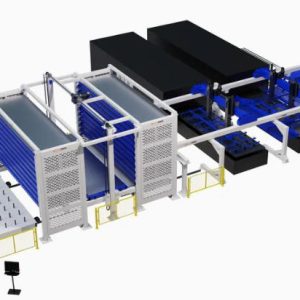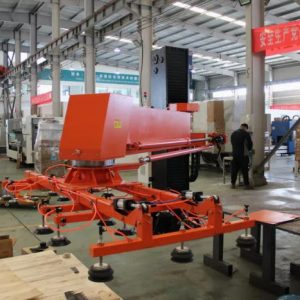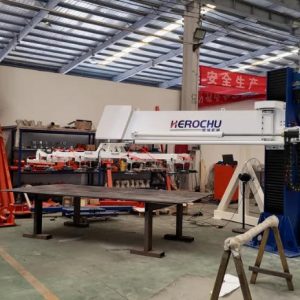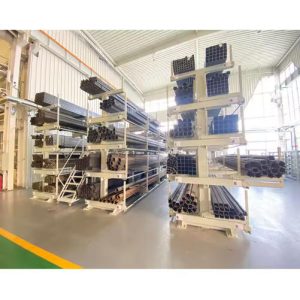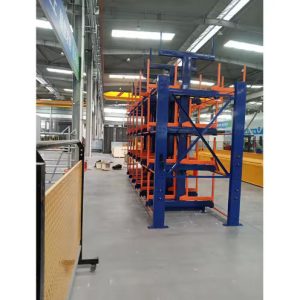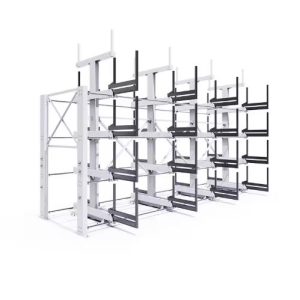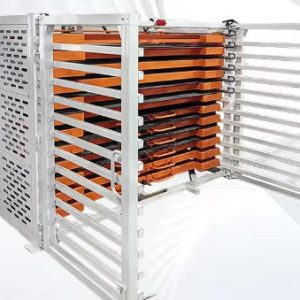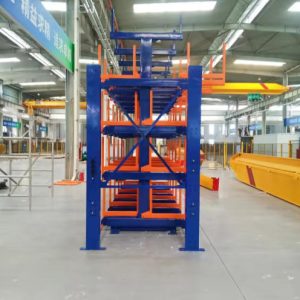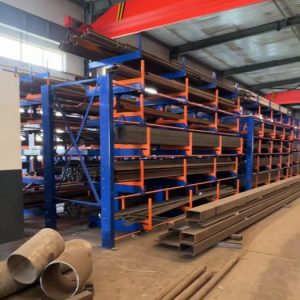Herochu Vacuum Lifting Device for Sheet Metal – Cantilever Precision That Starts at USD 1 299
Move a 4 m carbon-steel plate from stillage to laser bed in eight seconds, register it within half a millimetre, and never let a gloved hand touch the edge. That is the everyday proof delivered by the Herochu pneumatic cantilever loading manipulator: a vacuum lifting device for sheet metal engineered for workshops that need speed without surrendering floor space. CE-marked, EU-directive compliant and built under ISO 9001 surveillance, the unit ships in three chassis sizes—light, mid and heavy—yet every version keeps the same starting price of USD 1 299 because modularity, not add-ons, creates value.
Grip range that covers ninety per cent of nests on one machine
Light model handles 1–8 mm thickness, mid 1–12 mm, heavy 1–20 mm. Maximum sheet size is constant at 4 000 mm × 1 500 mm; minimum footprint is 1 250 mm × 1 250 mm, so even small remnants stay under control. Rated payloads climb from 300 kg through 500 kg to 1 000 kg on the heavy frame, yet overall weight remains low enough to anchor the cantilever to a 200 mm concrete slab—no pit, no civil work, no production pause while foundations cure.
Eight-cup array, zoned for intelligence
Each model carries eight spring-loaded vacuum cups on independent shut-off valves. Sense a 1 m offcut and only four valves open; approach a full sheet and all eight engage. A side-channel regenerative blower rated at 2.2 kW reaches −85 kPa in 0.6 s and holds steady even when oily mill scale reduces surface contact by thirty per cent. Loss-of-suction alarm triggers at −55 kPa; the carriage pauses, buzzer sounds, and the operator clears the issue without dropping the sheet. No compressed-air venturi to freeze in winter, no rotating vanes to clog with dust—just clean, continuous vacuum drawn through a washable HEPA cartridge.
Cantilever spine, retractable reach
The secret to high space utilisation is a telescopic aluminium arm that extends 1 800 mm under load and retracts to 650 mm when idle. Store stillages flush against the wall, feed a laser tucked into a corner, or service two machines set at 90° without relocating the base. A single sealed bearing at the mast head allows 280° rotation; a pneumatic brake locks the boom the instant the joystick is released. Total swing radius is 2.2 m—smaller than a pallet truck turning circle—so gangways stay clear and forklifts keep moving.
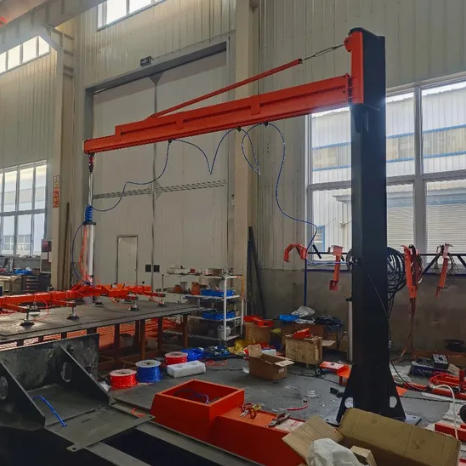
Dual-power logic: pneumatic muscle, electric brains
Lift, lower and rotation are pneumatic for speed and intrinsic safety; traverse and micro-positioning are servo-electric for repeatability. The marriage gives ±0.5 mm placement accuracy at the laser clamps while keeping running costs below 0.3 € per operating hour. Should shop air fail, an integrated 10 l reservoir maintains vacuum for thirty seconds—long enough to set the sheet on the table, not on the floor. A 24 V DC control circuit interfaces directly with the laser shuttle through dry contacts; no PLC programming, no black-box protocol converters.
Labour shift that shows on the payslip
One operator supervises the nest and presses cycle-start; the Herochu unit completes the pick-and-place loop. Typical manual loading of a 4 m × 1.5 m × 6 mm plate needs two people and 90 seconds; the manipulator finishes in 12 seconds. Across three shifts that releases 3.2 labour hours per day, 800 hours per year—enough to fund the entire device in month five on European wage rates. Insurance premiums also fall: no hand pinch points, no back strain, no dropped sheets edge-spraying grit across the shop.
From metal to timber without retooling
Although marketed as a vacuum lifting device for sheet metal, the same array handles plywood, MDF, acrylic, aluminium composite, even bundles of insulation board. Swap the standard nitrile cups for anti-static silicone or high-temp fluororubber in minutes; the bayonet mount needs no tools. One Midwest fabricator loads 18 gauge mild steel in the morning, switches to 12 mm polycarbonate signage blanks after lunch, and finishes the day with 3 mm textured aluminium—all without touching a spanner.
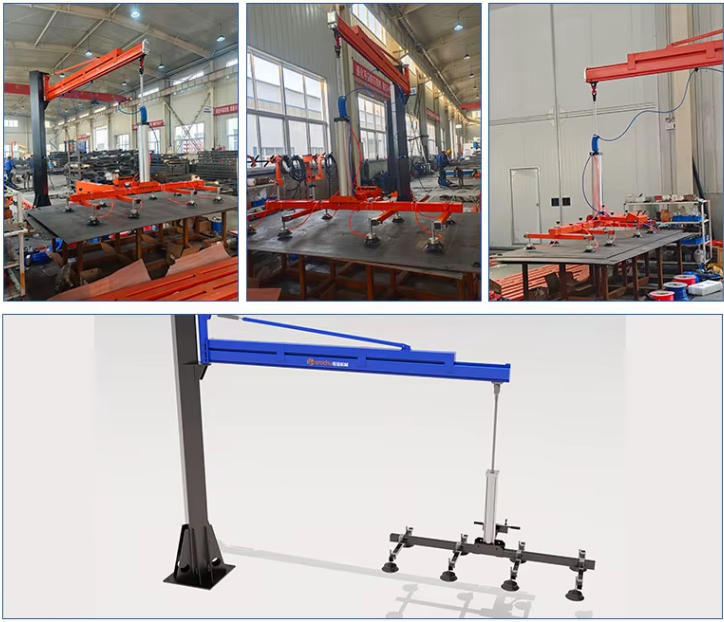
Installation that respects Saturday downtime
The manipulator arrives factory-assembled on a 1 200 mm × 1 200 mm base plate. Four M16 anchors fix it to existing concrete; anchor kit, torque chart and resin capsules are included. Connect 10 mm shop air line and 230 V single-phase supply, run the self-test routine, and the unit is production-ready within two hours. A folding safety prop allows the boom to park vertical, freeing floor space for overhead crane work when the loader is idle.
Maintenance forecast you can budget in January
Bearings are lifetime-greased; the blower carries a 20 000-hour service-free label. Once a month an operator wipes the cup rims with isopropyl alcohol and checks filter saturation—five minutes total. Annual inspection covers hose condition and mast bolt torque; no specialist tools, no scaffolding. Spare parts list fits on one A4 page and every component is stocked in Rotterdam, Chicago and Dubai for next-day delivery.
Certification folder that satisfies any auditor
Alongside the CE declaration you receive a risk assessment compliant with EN 13155 (vacuum lifting devices), noise measurement below 70 dB(A), and EMC test records for both 230 V and 110 V regions. A printed manual in English, Spanish and German explains fault codes; QR codes on the mast link to video tutorials shot on a live shop floor.
